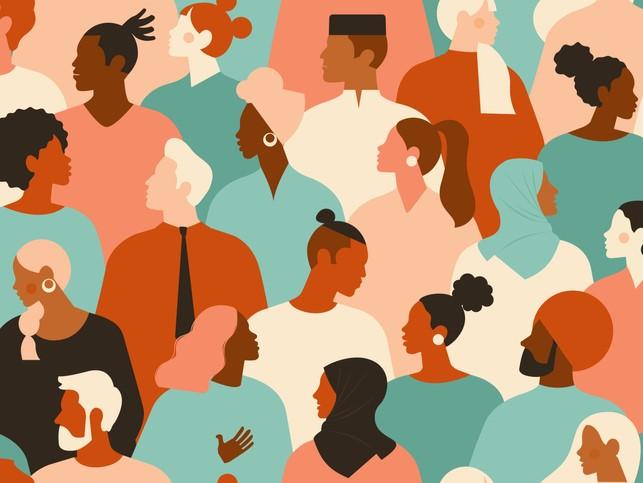With the resurgence of the Black Lives Matter movement and Advance HE’s 2020 staff statistical report highlighting the lack of diverse senior representation in higher education institutions (HEIs), both the sector and the community it serves are talking about race.
A key way to encourage these discussions is to embed a compulsory race equality curriculum as a way to engage staff and students in conversations, share resources and host events that ensure everybody in the university community has a role and responsibility in establishing race equality.
At Leeds Trinity, we are working to foster an inclusive culture across the curriculum as well as within areas such as recruitment, retention, attainment and career progression.
Based on our experience, here are the four key steps institutions should take in order to build an inclusive community.
1. Create a dedicated team to address institutional racism and unconscious bias
One approach to identify ways in which the university can address race inequality is to task a team of staff and students to consider issues such as access, student attainment and retention, and how to give Black, Asian and Minority Ethnic (BAME) and international students a sense of belonging.
Methods might include surveys, focus groups, anonymous feedback and analysis of institutional data. At Leeds Trinity, work by the Race Equality Charter (REC) Partnership, made up of staff and students from across the institution, helped facilitate increased representation of BAME staff and unconscious bias training for all staff. The issue of the degree-awarding gap for BAME students has been addressed, and we are working towards eliminating this, and we have embedded a race equality curriculum that reflected the diversity of all students.
- If we want non-traditional results, we need non-traditional approaches
- Competing hierarchies of oppression: why is race a lower priority?
- Do we need equity or equality to make things ‘fair’? Actually, we need both
Our undergraduate film and media students used social media and newspaper articles to find stories about students’ experiences of racism and unconscious bias. Their research, plus the feedback we received, resulted in the production of a short film, Re:Tension, and a toolkit for staff and students to encourage post-screening debate. The film highlights what institutional racism, unconscious bias and micro-aggression look like in a university setting, and the difficulties around choosing how to tackle them.
2. Develop an inclusive, interdisciplinary race equality curriculum
Tools that are accessible to all staff and students, such as a compulsory race equality curriculum, can build an inclusive community and foster connection. Ideally, these should have the capacity to evolve and develop over time.
Our race equality curriculum centres on the film Re:Tension and debate that follows it, which provides a safe and open environment for students to talk about race equality. This is supplemented with Black History Month events featuring internal and external speakers. Final-year students also have the opportunity to participate in a student research project linked to race equality, which can be done in conjunction with their dissertation.
Following consultations with the REC Partnership team and with endorsement from senior leadership, we made the curriculum compulsory for first-year students and continue to share materials with students throughout their degree. This has encouraged students to talk about race equality issues in a safe environment – both in the classroom and online.
Regular check-ins help ensure content remains relevant. By introducing the curriculum when students first join us, we aim to address challenges and draw on their feedback every year to develop new materials that reflect the needs of our community.
The concept of co-creation, similarly, is a way to improve student experience and establish a life cycle of knowledge exchange between students at all levels. As such, students can directly shape their learning by contributing to race equality projects, presentations and newsletters and reflect on their own experiences.
Every year students can participate in interdisciplinary projects, such as creating video content and writing blogs about their identity and experiences; they work collaboratively and creatively, while addressing social justice issues.
3. Engage the university community in conversations about race
An advantage of a race equality curriculum that spans the whole university is that it invites students and staff from all subject areas and backgrounds to share their experiences and expertise and create a dynamic and harmonious learning environment.
A curriculum that is compulsory for first-year students empowers academic colleagues to deliver sessions and ensures that everyone recognises their role and responsibility to be part of these conversations.
Use a wide range of resources to engage the university community in these conversations and cater to all learning styles. We have explored visual media such as the Re:Tension film and toolkit and interactive seminars with Points of Light recipient Joe Williams, as well as the extensive calendar of events for Black History Month.
4. Collect ongoing feedback to develop and refine the curriculum
Use ongoing feedback to measure the success and impact of the curriculum, so you can continue to develop and refine its content, design and delivery.
Since launching the race equality curriculum, we have used feedback from surveys, focus groups, assessments and learning and teaching forums to measure its success.
Anonymous student feedback highlighted how the curriculum ensures people feel safe to participate in the conversation and recognise the importance of being an ally. This process, as well as annual surveys, regular focus groups and feedback, is ongoing and keeps us accountable for progress. This was evidenced at Black Lives Matter: Accountability, Transparency, Action, an online event we hosted to listen to the lived experiences of Black students, staff and alumni, with attendees coming from other HEIs, organisations and schools across the UK.
After receiving the Race Equality Charter Bronze Award in 2020 and the Whatuni Student Choice Award for Diversity and Inclusion in 2021, we recognise our responsibility to establish a learning environment where everybody feels valued, respected and listened to. Other institutions are also requesting access to Re:Tension and the toolkit. The impact of this film is also seen in the university’s media, film and culture programme, with first-year students completing a core production module on intersectionality, using Re:Tension as a model.
Ricardo Barker is senior lecturer in film production, and Syra Shakir is senior teaching fellow in children, young people and families, both at Leeds Trinity University. Both are members of Leeds Trinity’s Race Equality Charter Partnership.
They were shortlisted for Outstanding Contribution to Equality, Diversity and Inclusion at the THE Awards 2021. A full list of shortlisted candidates can be found here. The winners were announced on 25 November 2021.
If you would like advice and insight from academics and university staff delivered direct to your inbox each week, sign up for the Campus newsletter.




comment